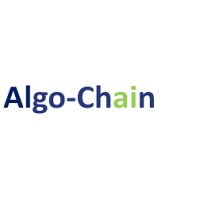Last week Invesco broadened the scope of exposures available to asset allocators by launching Europe’s first US insurance ETF – but the question is whether such a targeted play can appeal to more than a specific handful of investors.
The Invesco Dow Jones US Insurance UCITS ETF (INSU) listed on the London Stock Exchange last Thursday with a total expense ratio (TER)) of 0.35%, ETF Stream revealed.
While Invesco and four other issuers have ETFs capturing insurance companies featured in STOXX Europe 600 index, INSU becomes the first UCITS wrapper to capture US-listed issuers in the insurance space.
It does this by tracking the Dow Jones US Select Insurance index of 56 US-based companies involved in full-line, property, casualty and life insurance.
Chris Mellor, head of EMEA equity ETF product management at Invesco, said: "We chose the Dow Jones US Insurance index as it excludes reinsurance and provides a clean exposure to the core parts of the insurance business.
"The ETF launch was inspired by client interest, a number of investors in our US financials sector ETF were looking for a more specific insurance sector product and as the first US insurance focused UCITS ETF it also offers investors a passive alternative to higher priced active funds exposed to the sector.”
INSU is only the second ETF globally to track this benchmark provided by S&P Dow Jones Indices (SPDJI) , after the $367m iShares US Insurance ETF (IAK) listed in the US in 2006.
One investor told ETF Stream it offers a competitive way of capturing the US insurance market versus active managers who have struggled to beat the index over the long-term.
Wesley Wilkes, Ntwrk CEO at IronMarket Wealth, remarked on the novelty of the exposure and described INSU as an “interesting one”.
“I really love the subsector innovation and competition in the ETF space,” he said. “It gives great scope for asset allocators like us to play thematic or sector views directly into strategies without the same level of bottom-up work and cost.
“This is particularly true for such subsector plays like insurance or banks, rather than broader-based financial services sector exposure which can be either tactical or more long-term themed exposures.”
From a methodological perspective, however, investors may be cognisant of the make-up of INSU’s basket.
While over 50 constituents may sound reasonably diversified, the nature of the US insurance market – with handful of prominent names – means the strategy allocates almost 30% of its weight to just three names: Chubb, Progressive Corporation and Arthur J Gallagher.
Allan Lane, co-founder and CEO of Algo-Chain, was also less taken with the new launch, highlighting the fact BlackRock launched Europe’s first insurance ETF more than two decades ago.
“This might explain why Invesco’s new ETF providing exposure to US insurance firms is unlikely to grab the headlines. While there are no new ideas here, it is always good to have access to these niche ETFs via LSE listings,” he said.
He added the ETF’s launch could have come at an awkward time.
“Sadly, most European-based allocators have had to suffer recent declines in the US dollar as the Federal Reserve is nearing the end of their rate hiking bonanza.
“For example, if you are a pound sterling investor, this has seen 7.5% taken off US equity returns as of mid-July. Conversely, US investors accessing the European Insurance sector have had a field day with very strong 1-year returns.
“This shows you that as an ETF issuer you also need a bit of luck when it comes to the launch date of a new product.”




